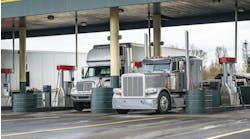Fleet risk management is a strategic approach focused on identifying, assessing, and mitigating risks associated with managing a fleet of vehicles. It plays a crucial role in ensuring the safety of drivers and the public, safeguarding assets, and enhancing operational efficiency. An effective FRM program helps organizations minimize the potential for accidents, comply with regulatory requirements, and achieve financial savings by reducing liability and insurance costs.
What does a fleet risk manager do?
A fleet risk manager oversees all aspects of fleet risk management. Their duties include developing risk mitigation strategies, implementing safety policies, conducting driver training, and managing compliance with transportation regulations. They also analyze fleet data to identify risk patterns and trends, work on improving fleet safety standards, and engage with insurance providers to manage claims and negotiate premiums. Essentially, they act as the guardians of the fleet’s safety and operational integrity.
Components of fleet risk management
- Risk identification: The first step involves pinpointing potential risks, ranging from driver error and vehicle malfunction to external factors like road conditions and weather.
- Risk assessment: This process evaluates the identified risks based on their likelihood and potential impact, helping prioritize which risks require immediate attention.
- Risk mitigation: Strategies are developed to address the prioritized risks, including preventive measures, safety protocols, and emergency response plans.
- Monitoring and reporting: Continuous monitoring and detailed reporting enable the tracking of risk indicators, assessment of policy effectiveness, and identification of areas for improvement.
- Review and improvement: The FRM program must be regularly reviewed and updated to reflect new risks, changes in operations, and technological advancements.
Implementing a fleet risk management program
Implementing an FRM program involves several key steps, starting with a commitment from top management to prioritize and support fleet safety initiatives. Establishing clear objectives and integrating safety into the corporate culture is fundamental. The next step is to conduct a thorough risk assessment to understand the fleet's specific risks. Based on this assessment, tailored risk mitigation strategies are developed, focusing on driver training, vehicle maintenance, and technology adoption.
Effective communication and training are essential to ensure all employees understand their roles in mitigating risks. Additionally, implementing technology solutions like telematics can provide real-time data to monitor fleet operations and driver behavior. Regular reviews and adjustments to the FRM program ensure it remains relevant and effective in addressing new challenges.
See also: RoadFlex unveils fuel risk management platform to eliminate fuel theft and fraud for fleets
Benefits of a fleet risk management program
The benefits of a well-implemented FRM program are manifold. It reduces the number of accidents, which in turn lowers the costs associated with vehicle repairs, legal fees, and insurance premiums. A strong focus on safety can enhance the organization’s reputation, making it more attractive to customers and potential employees. Additionally, compliance with regulatory requirements is improved, reducing the risk of fines and penalties.
An FRM program also contributes to operational efficiency by minimizing vehicle downtime and extending the lifespan of fleet assets. Moreover, it fosters a safety culture within the organization, boosting employee morale and retention by demonstrating a commitment to their well-being.
Fleet risk management is an indispensable part of modern fleet operations. It requires a systematic approach to identifying, assessing, and mitigating risks, overseen by dedicated fleet risk managers. By implementing a comprehensive FRM program, organizations can enjoy numerous benefits, including enhanced safety, reduced costs, and improved operational efficiency. Ultimately, a strong FRM program not only protects the organization’s assets and employees but also contributes to its long-term success and sustainability.




